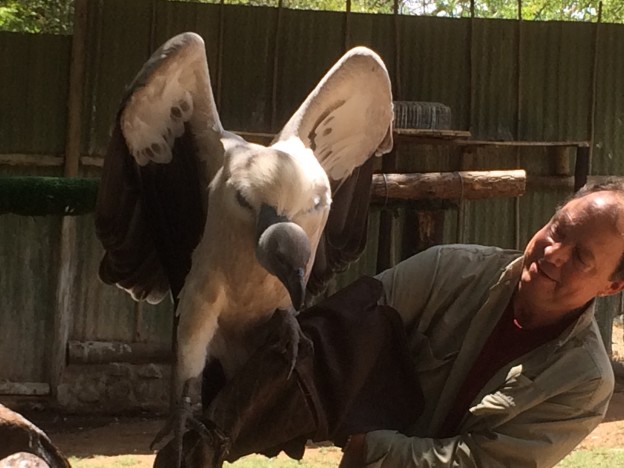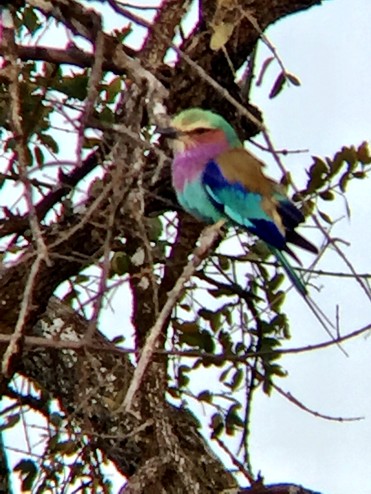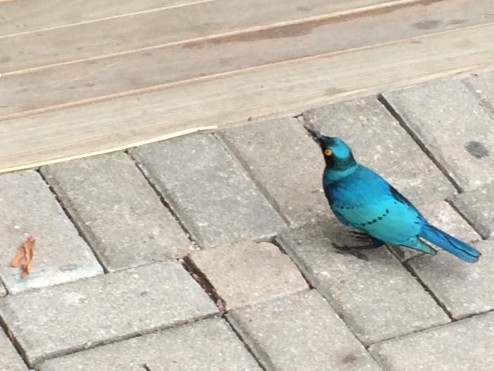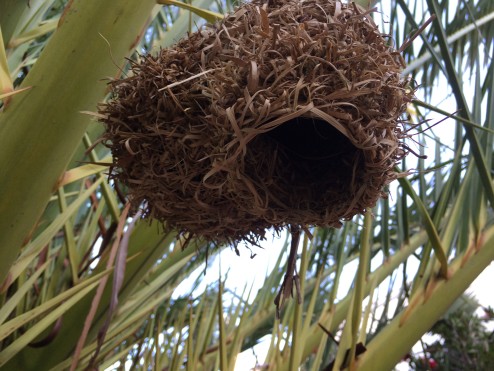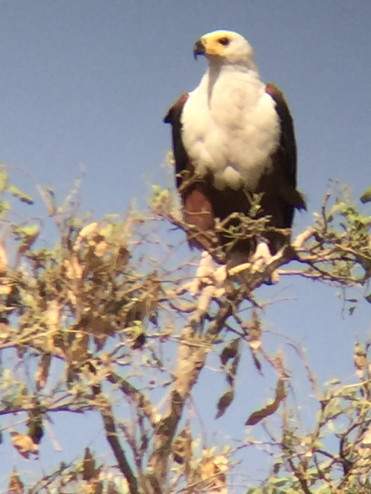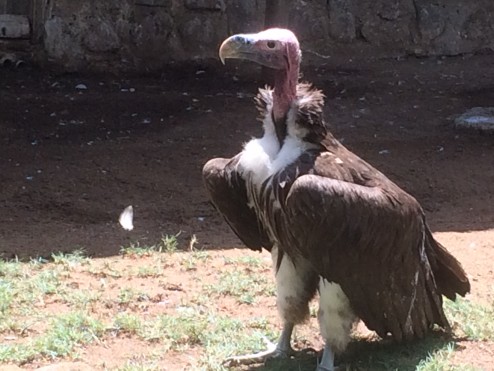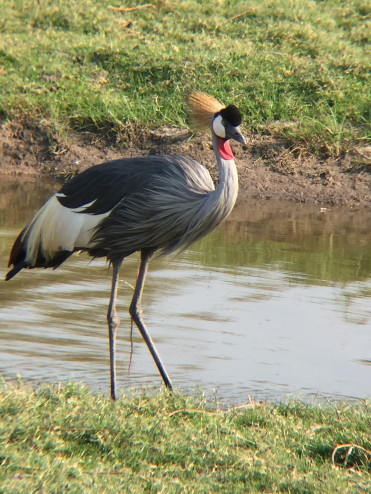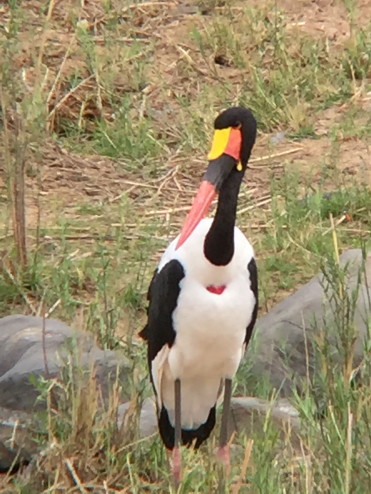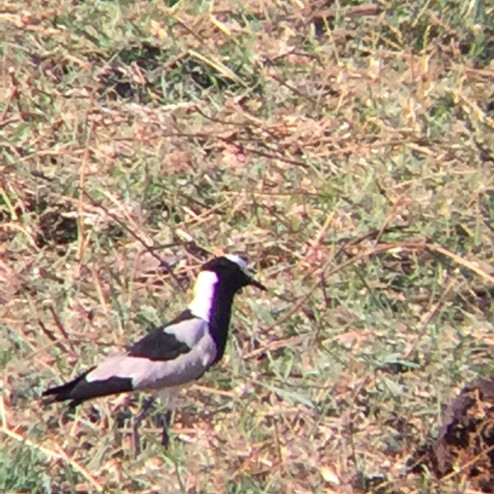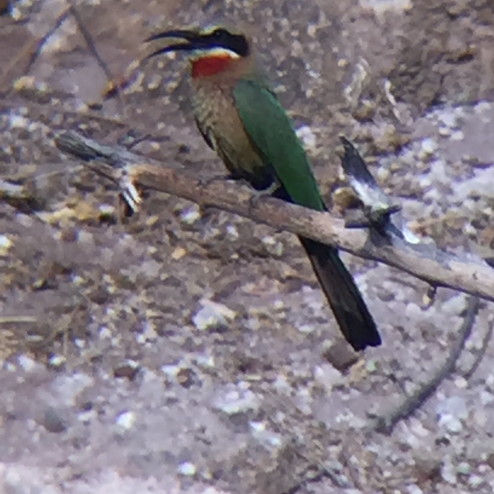As beginning birders, we have to hear the name and see the bird repeatedly to recognize it when we see it again. Good luck; there are over 900 species of birds here. Fortunately, the southern part of the African continent provided the opportunity to try again and again…and the guides were so knowledgeable and patient! Our very nice game drive mates never complained about our enforced bird stops, even though they were focused on the mammals.
Since we don’t see Lilac Breasted Rollers (top), or glossy starlings (above) at home in California, or the beautiful nest building activities of the black masked weaver (below), we are thrilled over and over again.
Due to our 2014 Summer in Arctic Canada and Alaska with lots of Bald Eagle sightings, we could help the other new birders identify the Fish Eagle, also seen on several Southern African country flags. “Just look for a softball high in a tree…”
Barbets, Bulbuls, Boubous, Kori Bustards, BeeEaters, Hornbills, Shrikes and Storks sent us scurrying to our bird books, as did the Hamerkops, Flycatchers, Jacandas, Vultures, Tawny Eagles and other harriers. After a while the Helmeted Guinea Fowl and the Francolins were so common we ignored them, like we did with Impala Antelopes. Vultures (when there is carrion there) tend to stay on the ground long enough for a close up. Kinda cute, no?
The dance of the Crested Crane pair…. was a high point…
As was the cry of the ubiquitous Grey Lourie….A.K.A. the “Go Wa-a-a-ay…Go Wa-a-a-ay” bird. However, the loudest, most obnoxious bird call reward belongs to the Hadeda Ibis (“Ha-ha-ha-dah-dah!”…) found in rural and urban environments, from North to South. Good luck with that nap you were working on. The Saddlebilled Stork (below), and all the wading birds, were so accommodating …
The Blacksmith Plover is a big help to us beginning birders as his unique coloring is visible on the fly.
Last, among the 50+ we added to our life lists, is a mature White-fronted Bee-eater.

